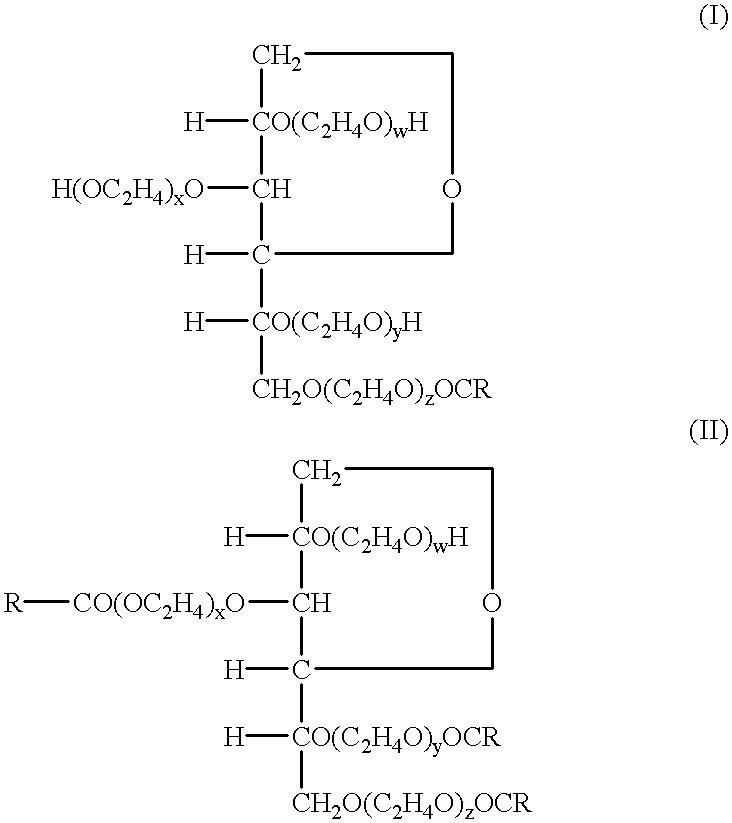Hydrocolloid adhesive mass useful for medical purposes
a technology of adhesive mass and hydrocolloid, applied in the field of novel compositions of hydrocolloid adhesive mass, can solve the problems of not providing completely satisfactory solutions, maceration phenomena and risks of superinfection, and none of these documents tackles another important aspect, and achieves the effect of high absorption
- Summary
- Abstract
- Description
- Claims
- Application Information
AI Technical Summary
Benefits of technology
Problems solved by technology
Method used
Image
Examples
example 2
The procedure is analogous to that of Example 1 except that in this case a sodium carboxymethyl cellulose of different particle size distribution is used. The 35.7 kg of BLANOSE.RTM. 7H4XF are therefore replaced here with the same amount of BLANOSE.RTM. 7H3XF (product marketed by AQUALON). Also in this Example, the product is coated onto a film of siliconized paper at a rate of 600 g / m.sup.2.
example 3
The procedure is analogous to that of Example 1 except that in this case another sodium carboxymethyl cellulose with different absorption properties is used. The 35.7 kg of BLANOSE.RTM. 7H4XF are therefore replaced here with the same amount of AQUASORB.RTM. A500 (product marketed by AQUALON). Also in this Example, the product is coated onto a film of siliconized paper at a rate of 400 g / m.sup.2.
example 4
13.8 kg of ONDINA.RTM. 68, 19.7 kg of VECTOR.RTM. 4114, 0.4 kg of PERKACIT.RTM. ZDBC and 0.4 kg of IRGANOX.RTM. 1010 are introduced successively into a Z-blade mixer at a temperature of the order of 130.degree. C. The mixture obtained is mixed for about 30 minutes, still at around 130.degree. C. 29.5 kg of WINGTACK.RTM. 86 are then added and the mixture is mixed for 20 minutes, still at around 130.degree. C. 0.5 kg of MONTANOX.RTM. 80VG is then introduced and the mixture is mixed for a further 15 minutes at around 130.degree. C. Finally, 35.7 kg of AQUASORB.RTM. A500 are introduced and the mixture is mixed for a further 30 minutes, still at around 130.degree. C. The resulting mixture is coated onto a film of siliconized paper at a rate of 1000 g / m.sup.2 at a temperature of between 120 and 160.degree. C. The coating produced in this way is transferred to a 30 .mu.m thick, polyurethane final support (produced from the polyurethane marketed under the name UCECOAT.RTM. by UCB). Shapes o...
PUM
 Login to View More
Login to View More Abstract
Description
Claims
Application Information
 Login to View More
Login to View More - R&D
- Intellectual Property
- Life Sciences
- Materials
- Tech Scout
- Unparalleled Data Quality
- Higher Quality Content
- 60% Fewer Hallucinations
Browse by: Latest US Patents, China's latest patents, Technical Efficacy Thesaurus, Application Domain, Technology Topic, Popular Technical Reports.
© 2025 PatSnap. All rights reserved.Legal|Privacy policy|Modern Slavery Act Transparency Statement|Sitemap|About US| Contact US: help@patsnap.com


